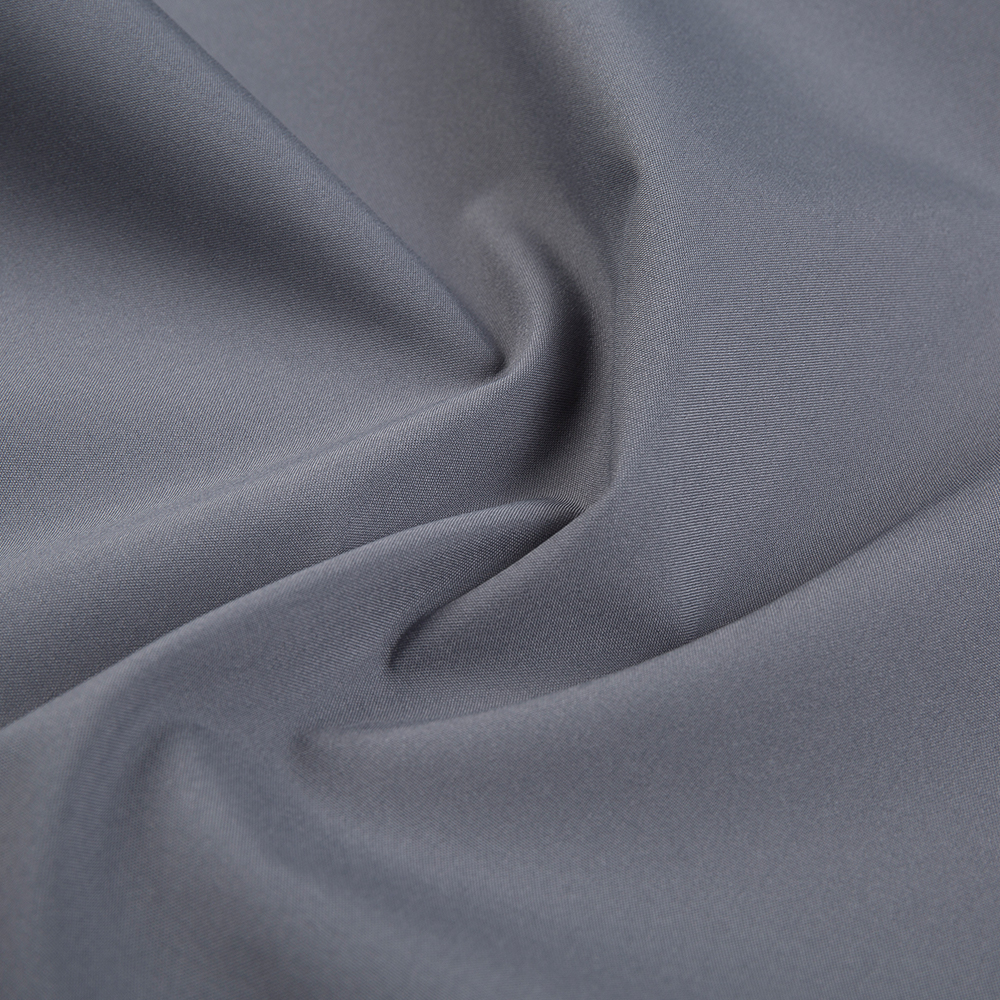Hardshell fabric manufacturers are increasingly adopting sustainable practices to minimize the environmental impact of their production processes. These steps involve reducing resource consumption, eliminating harmful chemicals, and incorporating eco-friendly materials and production methods. Below are some of the key actions manufacturers are taking to reduce the environmental footprint of hardshell fabric production:
Use of Recycled Materials
Recycled Polyester and Nylon: Many manufacturers are incorporating recycled polyester and recycled nylon into their hardshell fabrics. These materials are sourced from post-consumer waste, such as plastic bottles or discarded clothing, or from post-industrial waste. By using recycled fibers, manufacturers reduce the need for virgin materials, conserving natural resources and reducing the environmental impact of textile production.
Recycled Membranes: Some hardshell fabrics use recycled versions of the membranes (e.g., Gore-Tex or eVent) that provide waterproofing. This helps to minimize the environmental burden of producing new membranes and reduces plastic waste.
Water-Based and Solvent-Free Coatings
Eliminating PFCs: Perfluorocarbons (PFCs) are widely used in the waterproofing treatments for hardshell fabrics. These chemicals are highly persistent in the environment and pose significant health risks. Manufacturers are moving toward PFC-free waterproof coatings to reduce the use of harmful substances.
Water-Based Coatings: Instead of solvent-based waterproofing and durable water repellent (DWR) coatings, many manufacturers are adopting water-based coatings. These coatings use significantly less volatile organic compounds (VOCs) and are less harmful to the environment compared to traditional solvent-based treatments.
Solvent-Free Manufacturing: Some companies have also shifted to solvent-free processes in the production of hardshell fabrics, which reduces both chemical waste and air pollution.
Eco-Friendly Fabric Treatments
Bluesign® and OEKO-TEX® Certifications: Manufacturers are increasingly obtaining certifications like Bluesign® or OEKO-TEX® to ensure that their fabrics meet environmental and safety standards. These certifications guarantee that harmful chemicals are avoided during production and that the fabrics are tested for harmful substances, ensuring that the final product is safer for both the consumer and the environment.
Non-Toxic DWR Treatments: Traditional DWR treatments often use chemicals that are toxic or harmful to aquatic life. To address this, manufacturers are switching to non-toxic DWR treatments that are based on more environmentally friendly compounds, such as those derived from renewable resources.
Energy Efficiency and Reduced Carbon Footprint
Renewable Energy: Many manufacturers are switching to renewable energy sources (solar, wind, etc.) for their production facilities. This reduces their carbon footprint and contributes to a cleaner, more sustainable manufacturing process.
Energy-Efficient Machinery: The use of energy-efficient machines in the production of hardshell fabrics is also a key strategy. Manufacturers are upgrading their equipment to minimize energy consumption while maintaining the same level of performance and productivity.

Minimizing Water Usage
Water Conservation: The textile industry is notorious for high water consumption during fabric dyeing and finishing. Hardshell fabric manufacturers are taking steps to reduce water usage by employing closed-loop water systems, where water is recycled and reused throughout the production process.
Waterless Dyeing Technology: Some manufacturers are adopting waterless dyeing techniques that use supercritical CO2 instead of water. This significantly reduces water consumption and eliminates the use of toxic chemicals traditionally involved in the dyeing process.
Efficient Waste Management
Waste Reduction: Manufacturers are working to reduce waste generated during the production of hardshell fabrics. This includes minimizing fabric offcuts and scrap material, as well as reusing or recycling waste products.
Recycling Fabric Scraps: Many manufacturers recycle fabric scraps and offcuts from production, reprocessing them into new fabrics or using them for other products. This reduces the amount of waste that ends up in landfills and promotes a more circular economy.
Sustainable Packaging
Eco-Friendly Packaging: Hardshell fabric manufacturers are moving toward sustainable packaging options, such as using recycled cardboard, biodegradable materials, or reducing overall packaging size to minimize waste.
Minimalistic Packaging: In addition to sustainable materials, companies are adopting a more minimalistic approach to packaging. This reduces the environmental footprint of packaging materials and helps streamline logistics.
Circular Economy and Product Longevity
Durability and Repairability: Manufacturers are designing hardshell fabrics with longevity in mind. By producing more durable fabrics that withstand wear and tear, the need for replacement products is reduced. This promotes a more sustainable consumption model, where products last longer and contribute less to the cycle of consumption and waste.
Take-Back Programs: Some manufacturers have initiated take-back programs where consumers can return old hardshell garments for recycling or repurposing. This initiative helps reduce fabric waste and promotes a circular approach to textile production.
Eco-Friendly Fiber Innovations
Bio-Based Fabrics: Manufacturers are exploring the use of bio-based fibers made from renewable plant resources, such as hemp, bamboo, or corn-based fibers, for producing hardshell fabrics. These fibers are biodegradable and require less water and pesticides to grow compared to synthetic fibers.
Innovative Natural Coatings: Some manufacturers are experimenting with natural-based coatings, such as waxes or oils, to provide waterproofing and weather resistance without relying on synthetic chemicals.
Transparency and Accountability
Supply Chain Transparency: Manufacturers are becoming more transparent about their supply chains, providing consumers with clear information about where and how the materials are sourced. This transparency encourages ethical sourcing and helps ensure that materials are produced sustainably.
Environmental Impact Reports: Many companies are now publishing annual sustainability reports or environmental impact assessments that detail their efforts to minimize waste, reduce emissions, and improve product sustainability.











